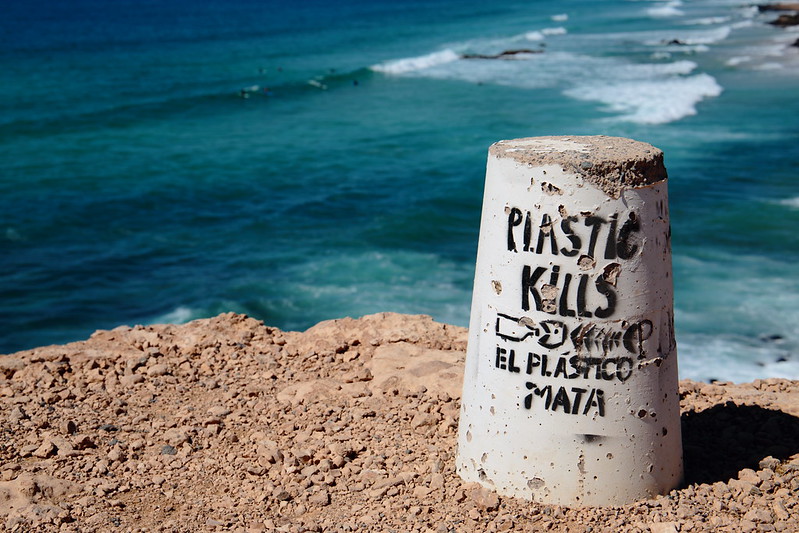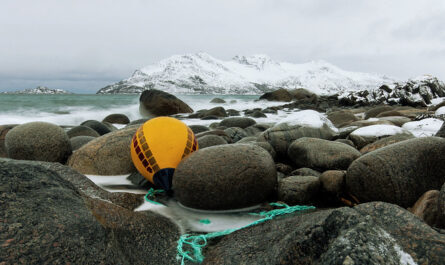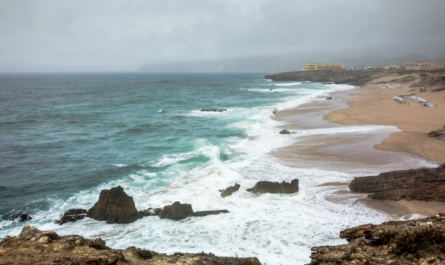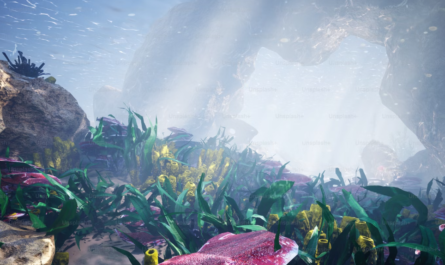Plastic pollution has become one of the most pressing environmental issues facing our oceans today, and the Atlantic Ocean is no exception. From plastic bottles and bags to microplastics invisible to the naked eye, plastics are permeating every corner of the Atlantic, affecting marine ecosystems, coastal communities, and even human health. This plastic crisis, exacerbated by increasing production and inadequate waste management practices, has prompted scientists, policymakers, and environmental organizations to seek urgent solutions to curb its impact.
In this article, we explore the scope of plastic pollution in the Atlantic, examining its sources, impacts, and the innovative solutions being developed to tackle this growing crisis. Understanding the complexities of plastic pollution and supporting sustainable practices are critical steps in preserving the health of the Atlantic Ocean for future generations.
The Scale of the Problem: Understanding Plastic Pollution in the Atlantic
Plastic pollution in the Atlantic Ocean is immense, with millions of tons of plastic waste entering the ocean each year. Studies estimate that over 8 million metric tons of plastic enter the world’s oceans annually, and a significant portion of this ends up in the Atlantic due to wind currents, rivers, and oceanic pathways. Plastic pollution in the Atlantic takes many forms, ranging from larger debris, such as discarded fishing gear and plastic containers, to microplastics—tiny plastic particles that result from the breakdown of larger items or are intentionally manufactured for products like cosmetics.
One of the most startling discoveries in recent years is the presence of plastic gyres, large circular currents that trap and accumulate plastic waste. In the Atlantic, the North Atlantic Garbage Patch is a particular area of concern. Located between the eastern coast of the U.S. and the western coast of Europe, this garbage patch has become a concentration point for plastic debris, creating a sort of “plastic soup” that disrupts marine ecosystems.
Sources of Plastic Pollution in the Atlantic
Plastic pollution in the Atlantic originates from a variety of sources, including:
- Land-Based Sources: Approximately 80% of plastic in the ocean originates from land. Mismanaged plastic waste from coastal cities, urban areas, and rivers eventually finds its way to the ocean. Urban runoff, improper waste disposal, and inadequate recycling systems contribute to the accumulation of plastics in the Atlantic.
- Marine-Based Sources: Fishing gear, such as nets, lines, and traps, often becomes lost or discarded at sea, contributing significantly to marine plastic pollution. Known as ghost gear, these abandoned items can continue to trap marine life for years, posing severe threats to animals and habitats.
- Microplastics and Industrial Plastics: Microplastics, including microbeads and microfibers from synthetic clothing, are tiny particles that make their way to the ocean through wastewater systems. Industrial activities also release nurdles (small plastic pellets) into the environment, which are transported by rivers and storm drains to the ocean.
The Impact of Plastic Pollution on Marine Life and Ecosystems
Plastic pollution in the Atlantic Ocean has severe consequences for marine life, ecosystems, and biodiversity. As plastics enter the ocean, they pose both direct and indirect threats to the organisms that inhabit these waters.
1. Ingestion and Starvation
One of the most direct impacts of plastic pollution is ingestion by marine animals. Mistaking plastic debris for food, marine organisms like fish, seabirds, and sea turtles consume these materials. Studies have shown that sea turtles often confuse plastic bags for jellyfish, one of their primary food sources. Once ingested, plastics can accumulate in the digestive tract, leading to blockages, malnutrition, and ultimately starvation.
Microplastics, due to their small size, are especially problematic. They can be consumed by smaller marine organisms, such as plankton and filter-feeding animals, entering the food chain at the very base. As larger animals consume smaller prey, the plastics accumulate up the food chain, a process known as bioaccumulation. This accumulation affects not only marine predators like sharks and whales but also humans who consume seafood contaminated with microplastics.
2. Entanglement and Injury
Plastic debris, especially fishing gear like nets and lines, poses an entanglement hazard to marine animals. Ghost fishing gear continues to catch fish, seabirds, and marine mammals long after it has been discarded, leading to injuries, suffocation, and death. For example, dolphins and whales often become entangled in discarded nets, which restricts their movement, impairs their ability to feed, and leaves them vulnerable to predators.
Entanglement also damages coral reefs, which are essential to the health of marine ecosystems. When plastic debris settles on coral reefs, it can smother corals, block sunlight, and introduce harmful bacteria, weakening these fragile ecosystems.
3. Chemical Pollution and Toxins
Plastics in the ocean attract toxic chemicals from surrounding waters. Persistent organic pollutants (POPs), which include chemicals like PCBs and DDT, are known to adhere to plastic surfaces. When marine organisms ingest plastic, they also consume these chemicals, which can have toxic effects on their physiology and reproductive systems. These toxins can lead to immune system damage, reproductive failure, and increased mortality rates.
As these toxins move up the food chain through bioaccumulation, they can have implications for human health. Studies have detected microplastics and associated chemicals in seafood, indicating that the plastic pollution problem in the Atlantic is not confined to marine environments but also impacts human populations that rely on these ecosystems for food.
The Role of Technology in Tackling Plastic Pollution
Addressing plastic pollution in the Atlantic Ocean requires a multi-faceted approach that combines technology, policy, and community engagement. Technology plays a crucial role in detecting, collecting, and preventing plastic waste from entering the ocean.
1. Ocean Clean-Up Technologies
Efforts to clean up plastic pollution in the ocean have led to the development of innovative solutions, such as The Ocean Cleanup Project, which focuses on capturing plastic waste from ocean gyres. This organization has designed floating systems that collect plastics from the ocean surface, intercepting large debris before it breaks down into microplastics.
Another approach involves autonomous drones and robots that can detect and collect plastic waste in hard-to-reach areas. These robotic systems can navigate currents and efficiently collect waste, minimizing the need for human intervention. Although still in development, these technologies represent a promising step toward large-scale plastic recovery efforts.
2. Biodegradable and Eco-Friendly Materials
To prevent plastic pollution from entering the ocean, there is a growing emphasis on developing biodegradable alternatives to conventional plastics. Bioplastics, made from renewable sources like cornstarch or seaweed, break down more easily in the environment, reducing the persistence of plastic waste in oceans. Some companies are developing edible packaging materials, which could serve as sustainable alternatives to single-use plastics in food packaging.
3. Microplastic Filters in Wastewater Treatment
Because a significant amount of microplastic pollution enters the ocean through wastewater, implementing microplastic filtration technologies at wastewater treatment plants is crucial. Advanced filters, such as sand and membrane filters, can capture microplastics before they reach rivers and oceans. This approach not only reduces the load of microplastics entering the Atlantic but also protects freshwater ecosystems along the way.
Policy and Community Efforts to Combat Plastic Pollution
While technology provides tools for cleaning up and reducing plastic waste, policy measures and community engagement are essential for long-term solutions. Governments, organizations, and individuals must work together to create policies that address plastic pollution at the source and reduce overall plastic consumption.
1. International Agreements and Regulations
In recent years, international bodies have begun to recognize plastic pollution as a global issue. The United Nations Environment Programme (UNEP) has been leading efforts to create a legally binding global treaty to address plastic pollution. This treaty aims to regulate plastic production, promote recycling, and fund clean-up initiatives, fostering global cooperation to tackle the plastic crisis.
On a regional level, countries bordering the Atlantic have implemented bans on single-use plastics and plastic bags, while the European Union has introduced the Single-Use Plastics Directive, which restricts the sale of items like plastic cutlery, plates, and straws. These policies reduce plastic consumption and encourage the development of sustainable alternatives.
2. Plastic Bans and Recycling Initiatives
Local governments and organizations have introduced measures to curb plastic use and improve recycling infrastructure. Many cities have introduced plastic bag bans, charging fees for plastic items, or offering incentives for using reusable alternatives. These initiatives aim to reduce the demand for single-use plastics, which are a major source of marine pollution.
Recycling programs that focus on extended producer responsibility (EPR) require manufacturers to take responsibility for the lifecycle of their products, including disposal and recycling. This approach encourages companies to design products with recyclability in mind and invest in sustainable materials.
3. Community Clean-Up Efforts
Community-driven clean-up initiatives are a vital part of reducing plastic pollution, empowering individuals and organizations to take direct action in their local environments. Coastal clean-up events, like those organized by Ocean Conservancy’s International Coastal Cleanup, engage volunteers in collecting plastic waste from beaches, preventing it from entering the ocean.
Grassroots efforts raise awareness of plastic pollution, inspire action, and highlight the importance of responsible disposal and recycling practices. Community efforts can also have a ripple effect, encouraging local governments and businesses to support sustainability initiatives.
Moving Forward: A Call for Collective Action
Addressing plastic pollution in the Atlantic Ocean is a challenge that requires collective action at all levels, from local communities to international organizations. The journey to a plastic-free ocean involves reducing plastic use, developing sustainable alternatives, and investing in technologies to clean up existing pollution.
Every individual can play a role by making conscious choices to reduce plastic consumption, recycling responsibly, and supporting policies and products that prioritize environmental sustainability. Governments and industries must work together to implement policies that reduce plastic production, encourage eco-friendly design, and ensure effective waste management.
Conclusion: Protecting the Atlantic Ocean from Plastic Pollution
The Atlantic Ocean, with its vast ecosystems and abundant biodiversity, is an invaluable resource that sustains life and supports coastal communities around the world. However, plastic pollution poses a grave threat to its health and resilience. Addressing this crisis requires a commitment to sustainable practices, innovative technologies, and international cooperation.
By embracing solutions that prioritize environmental responsibility and fostering a culture of sustainability, we can protect the Atlantic from the plastic crisis and ensure that future generations can experience the beauty, diversity, and vitality of a healthy ocean. Together, we can make strides toward a cleaner, more resilient Atlantic Ocean.



